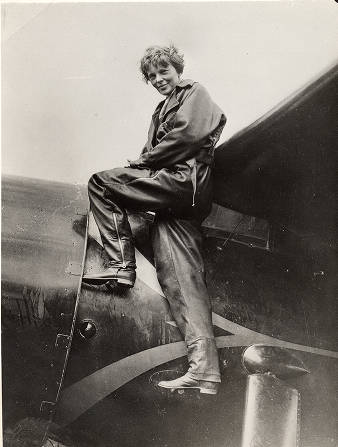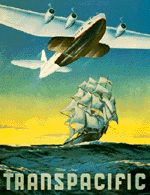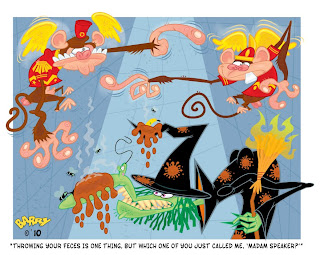 |
| Fast |
 |
| Collect |
 |
| Sad |
 |
| Lost |
 |
| Rock |
 |
| Broken |
 |
| Jump |
 |
| Transport |
 |
| Nervous |
 |
| Scared |
 |
| Tree |
 |
| Wet |
 |
| Battle |
 |
| Escape |
 |
| Flight |
 |
| Squeeze |
 |
| Big |
 |
| Fast |
 |
| Collect |
 |
| Sad |
 |
| Lost |
 |
| Rock |
 |
| Broken |
 |
| Jump |
 |
| Transport |
 |
| Nervous |
 |
| Scared |
 |
| Tree |
 |
| Wet |
 |
| Battle |
 |
| Escape |
 |
| Flight |
 |
| Squeeze |
 |
| Big |
 In 1928 Amelia Earhart became the first woman to fly the Atlantic Ocean, a feat which made her an instant celebrity even though she was only a passenger, or in her self-deprecating description, “a sack of potatoes.” In 1932 she became the first person since Charles Lindbergh to fly the Atlantic solo, doing it in record time and becoming the first person to have crossed the Atlantic by air twice.
In 1928 Amelia Earhart became the first woman to fly the Atlantic Ocean, a feat which made her an instant celebrity even though she was only a passenger, or in her self-deprecating description, “a sack of potatoes.” In 1932 she became the first person since Charles Lindbergh to fly the Atlantic solo, doing it in record time and becoming the first person to have crossed the Atlantic by air twice.
Having received far more credit than she felt she deserved in 1928, “I wanted to justify myself to myself. I wanted to prove that I deserved at least a small fraction of the nice things said about me.” So on 20 May 1932 (the fifth anniversary of Lindbergh’s flight), Amelia Earhart took off from Harbour Grace, Newfoundland in her single-engine bright red Lockheed Vega. The flight, rocked by storms, lasted over 14 hours and landed her in Londonderry, Northern Ireland.
The below map features quotes from Earhart’s acceptance speech of The Society’s Special Medal after her unparalleled achievement. (Please note all pinpoints are approximate as there are no logs of times and coordinates for her flight.)
View Amelia Earhart’s 1932 Transatlantic Solo Flight in a larger map. Or, download the accompanying American National Biography Online Amelia Earhart infographic.
The hundreds of telegrams, tributes, and letters that poured in after the 1932 solo flight testify that women in the United States, indeed throughout the world, took Amelia Earhart’s individual triumph as a triumph for womanhood, a view she herself encouraged. At a White House ceremony honoring her for her flight, she succinctly captured the links between aviation and feminism: “I shall be happy if my small exploit has drawn attention to the fact that women are flying, too.”
With all the mythology surrounding Amelia Earhart’s last flight in 1937, it is hard not to let the unsolved mystery of her disappearance cloud our historical memories. Without that dramatic denouement, however, it seems likely that Amelia Earhart would have been remembered primarily for the skill, daring, and courage demonstrated in her 1932 Atlantic solo. It is the life, not the death, that counts.
Susan Ware is the General Editor of American National Biography Online and author of Still Missing: Amelia Earhart and the Search for Modern Feminism. A pioneer in the field of women’s history and a leading feminist biographer, she is the author and editor of numerous books on twentieth-century US history. Ware was recently appointed Senior Advisor of the Schlesinger Library at the Radcliffe Institute for Advanced Study.
For more information on Earhart, visit her entry in American National Biography. The landmark American National Biography offers portraits of more than 18,700 men and women — from all eras and walks of life — whose lives have shaped the nation. More than a decade in preparation, the American National Biography is the first biographical resource of this scope to be published in more than sixty years.
Subscribe to the OUPblog via email or RSS.
Subscribe to only American history articles on the OUPblog via email or RSS.
Image credit: Earhart and “old Bessie” Vega 5b c. 1935. Public domain via Wikimedia Commons.
The post Charting Amelia Earhart’s first transatlantic solo flight appeared first on OUPblog.
 Holding more than 110,000 pieces of mail, the mammoth plane that weighed more than 52,000 pounds and had a 130-foot wingspan lifted from the waters of San Francisco Bay. The plane, the China Clipper, was beginning the first flight across the Pacific Ocean on November 22, 1935—just eight years after Charles Lindbergh had flown alone across the Atlantic.
Holding more than 110,000 pieces of mail, the mammoth plane that weighed more than 52,000 pounds and had a 130-foot wingspan lifted from the waters of San Francisco Bay. The plane, the China Clipper, was beginning the first flight across the Pacific Ocean on November 22, 1935—just eight years after Charles Lindbergh had flown alone across the Atlantic.
Built by the Glenn Martin Company, the China Clipper was a giant seaplane, a design well-suited to its use. The plane had to be massive to carry powerful enough engines and enough fuel to cover the vast expanse of the Pacific. The size and weight meant the plane would need a large runway, uncommon in the 1930s when aviation was just beginning. A seaplane, though, could easily land on water.
Flying across the Pacific was the brainchild of Juan Trippe, president of Pan American Airways, the leading U.S. airline at the time. Trippe knew that even the largest, most powerful plane would not be able to cross the entire Pacific in one flight. He planned to make stops at Honolulu, Midway, Guam, and Wake islands before reaching the plane’s original destination at Manila, in the Philippines. He was there—along with Postmaster General James A. Farley—to send the plane off on its initial flight. Trippe meant the name clipper to evoke the romance of the fastest merchant ships of the days of sail, the clipper ships that for decades had carried on the China trade.
Pan Am added two other planes to its trans-Pacific fleet, the Hawaii Clipper and the Philippine Clipper. Trans-Pacific passenger service was inaugurated in 1936, and that same year the first trip to China took place. Later, the Martin seaplanes were replaced by even more powerful Boeing aircraft.
“This Day in World History” is brought to you by USA Higher Education.
You can subscribe to these posts via RSS or receive them by email.
On 1 October 1954, Sir Hugh Casson, the urbane professor of interior design who had been director of architecture at the Festival of Britain, found himself standing by the Tiananmen Gate in the ancient and still walled city of Peking. In China to present a statement of friendship signed by nearly 700 British scientists and artists, he was watching a parade that the reporter James Cameron reckoned to be “the greatest show on earth”. First came the troops and the “military ironwork”, grinding past for a full hour. This was followed by a much longer civil parade in which the people marched by in barely imaginable numbers, beaming with joy at their elevated leaders who gazed back with the slightly “subdued” expression of still unaccustomed new emperors.
The spectacle with which China celebrated the fifth anniversary of the communist liberation was brilliantly organised, as Casson felt obliged to admit. He was less impressed by the admiring expressions worn by many of the other international guests: “Gold-rimmed spectacles misted with emotion, cheeks creased with years of well-meant service in this cause or in that, shirts defiantly open at the neck, badges in lapels, and there in the middle – could it have been? – an MCC tie.” That particular specimen was Ivor Montagu, a cricket-loving friend and translator of the great Soviet film-maker Sergei Eisenstein.
Sickened by the rapture of the communist regime’s ardent western friends, Casson quickly retreated to the shaded “rest room” beneath the viewing stand. Here he lingered among yellow-robed Tibetan lamas, sipping tea and exchanging impressions with other doubtful Britons: the classically minded and no longer Marxist novelist and poet Rex Warner, and AJ Ayer, the high-living logical positivist who would come home to tell the BBC that China’s parade had reminded him of the Nuremberg rallies.
Enraptured or appalled, none of these British witnesses appears to have regretted the absence of Stanley Spencer. The 63-year-old painter, so famously associated with the little Berkshire village of Cookham, had managed to escape the entire show – thanks, he later explained, to “some Mongolians”, whose timely arrival at the hotel that morning had provided the cover under which he retreated upstairs to his room.
It was the discovery that Spencer had been to China that persuaded me to look further into this forgotten episode. I soon realised that an extraordinary assortment of Britons had made their way to China in 1954, nearly two decades before 1972, when President Nixon made the stage-managed and distinctly operatic visit that has gone down in history as the moment when the west entered rapprochement with the People’s Republic of China. Were these motley British visitors just credulous idiots, for whom “Red China” was another version of the legendary Cathay? That is what the 24-year-old Douglas Hurd and the other diplomats in the British embassy compound in Peking appear to have suspected of these unwelcome freeloaders. Or was something more significant going on?
Nowadays, the rapidly increasing number of British travellers to China think nothing of getting on a plane to fly directly there. Yet Spencer had good reason to feel “trembly” as he and the five other members of his entirely unofficial cultural delegation approached the runway at Heathrow on 14 September 1954. Though Britain had recognised China a few months after the liberation, it had yet to establish proper diplomatic relations with the communist-led government, and the embarking Britons couldn’t pick up a visa until they had reached Prague. That meant crossing the iron curtain dividing Europe. “Did you go under or over it?” one joker would later ask, making light of a passage that was
 Skywriting: Poems to Fly
Skywriting: Poems to Fly
By J. Patrick Lewis
Illustrated by Laszlo Kubinyi
Creative Editions
$17.95
ISBN: 978-1-56846-203-5
Ages 4-8
On shelves September 1, 2010
We were promised jet packs. That’s what the future was supposed to hold for us. When you think of the future you may imagine things like flying cars or personalized jet packs. So in many ways the future just boils down to thinking up new ways to soar through the air. Humans get a real kick out of that sort of thing. Now I have never seen a jetpack make an appearance in a non-fiction title for children before and I CERTAINLY have never seen one in a non-fiction book of poetry. That’s what you get, though, when you read through the latest from J. Patrick Lewis and partner in crime Laszlo Kubinyi in their, Skywriting: Poems to Fly. Lewis has written out thirteen poems tracing the history of humanity’s obsession with flight. From Icarus to outer space, in essence. The result comes off as a kind of ode to not just our successes but our fantastic failures as well. Where there’s a jetpack, there’s a testament to our amazing/nutso imaginations.
Thirteen poems trace thirteen attempts at making it to the sky. Some were successful, as with the Montgolfier brothers’ hot air balloon. Some were utter failures, like the multiplane of the Marquis d’Equeville. Some you’ve undoubtedly heard of, like the zeppelin. Others, like the kooky Piaseckivz-8P Airgeep or the French Equestrian Balloon are a little more obscure. And some, when all is said and done, never even left the minds of their creators (as with the beautiful Minerva that graces the cover of this book). The desire to lift oneself up unto the heavens above inspires both genius and madness in flight’s inventors. Tragedy and triumph too. Backmatter includes Endnotes and a Timeline.
Lewis allows himself to have a bit of fun with this particular book. For example, poems are not held to the same standards or rote forms. Instead, their formats pair well alongside their texts. So it is that the utterly ridiculous Ornithopter is described in a limerick, while the poem about The Wright Brothers gets a more respectful A/B/A/B format. As for the wordplay itself, how do you resist a line like, “metal Darth Vader / impersonator” to describe a sleek metal fighter jet?
One quibble I might have would be the fact that the Icarus story that starts us off is never identified as a myth in either the poem or the backmatter. One might assume that kids would be familiar with this myth and discount it as legend, but couched alongside all these true moments in history, I would have liked this to have been a little clearer.
Though the Endnotes mention the tragic ends to some of these creations, the text of the poems themselves is consistently upbeat. You see the LZ 127 Graf Zeppelin then, rather than its less fortunate cousin, the Hindenburg. Similarly the Space Shuttle Columbia STS-109 is seen at the height of its power. It’s only when you read the notes in the back that you hear about its own fate. Some readers may wish that a sober note could have been made in the poetry, alluding to these two incidents
This is an illustration I did for the upcoming issue of Insider magazine.

More illustrations from my blog: House of Coffeebean

Every dream started from a clumsy mind.
More clumsy drawings from my illustrated blog: House of Coffeebean
This is a painting I did for Illustration Friday a few weeks ago, titled "Brave"
You can see more of my artwork at www.klbaileyart.com
 A twofer post: Monkeys and Flight.
A twofer post: Monkeys and Flight.
 The new challenge is:
The new challenge is:
Flight!
Illustrate "Flight" - Look! Up in the sky! It's...
The "Monkey" challenge is over. The new challenge is "Flight" and ends on April 12, 2010. The "Awake" challenge continues for another week and ends on April 5, 2010.
[this post was created in advance and scheduled for posting at a later date - I am unavailable for a while so play nice - I will judge challenges on my return]
 Hands down, the most fetching cover of the year. Look at this house. Absolutely beautiful. This is kind of the house of my dreams, and the minute that I saw the cover I yearned to live inside.
Hands down, the most fetching cover of the year. Look at this house. Absolutely beautiful. This is kind of the house of my dreams, and the minute that I saw the cover I yearned to live inside.
Until I read the book.
Miranda is a little girl who often gets caught by the wind. She is diminutive in size, and can easily wind up tossed about like a kite without a string. One day she is taken by the wind and lands in some brambles where she is discovered by Wysteria's hounds. Wysteria Barrows is the mistress of this house which is called Bourne Manor. Wysteria takes Miranda in, and sets her to work mending the fishing nets that pay the bills. Wysteria is a bit odd, but Miranda is thankful to have a home. So she overlooks the fact that Wysteria locks her in her room every night and makes her wear heavy iron boots so that the wind no longer takes her.
But Miranda is a child, after all, and she is curious. Over time, she discovers the entry to Wysteria's late husband's study. He was a sea captain, and among all of the expected treasures in the study, Miranda finds a secret room that is filled with kites. Miranda is soon up on the widow's walk flying the kites unbeknownst to Wysteria. When her beloved kite is stolen by the wind and found by a young boy named Farley, Miranda feels a stirring in her soul that she cannot name.
Soon, Miranda finds herself on her own, and is discovering the secrets of the Manor. Chilling secrets. Should she stay with Wysteria who has helped her all of this time, or should she escape and see where her future takes her?
Now, I should preface this by saying that I am very susceptible to books about houses that seem somewhat possessed. I went and read Amityville Horror at the tender age of 9 (which I DON'T recommend!!!) so houses with personalities scare me more than your average reader. I do not want to imply that this is a horror story, but there are ghost story elements to it. Along with a fairytale like atmosphere complete with an otherworldly lead character, and an Irish boy filled with fairy lore.
Rita Murphy has written an interesting and ethereal story about friendship, family, loyalty and first love. It is an odd story. There is no other way to say it. But it is magical and compelling as well. Bird is for the older tween who is a deep reader and will not be put off by something completely different.
Mario Feese created this surprisingly lovely image, Air Lines, out of global flightpath statistics. He writes:
Every scheduled airliner route has been extracted from booking and airline systems. Every single route is represented by a small line, so the transatlantic racetrack is a sea of lines, whereas African or local Cessna routes are only a subtle hint.
It took several months to gather information and program the software algorithm that interprets inputs like LHRDXBSIN3242AD into vector files.
He’s selling prints for US$38.
Hey, can I hitch a ride with you? So cute and love the look on his face.
Great concept!
I agree with the other comments.
That expression alone tells a dramatic story! Genius!
me toooo! :)
I love your rolling hills. And the terrified look on the kid's face. Ha!
nice expression
I would love to try it as well! Great point of view and movement!
I would love to try it too! Great perspective and movement, Ginger!
Fabulous ride!
Love it!Love the perspective:)It must be difficult to ride it,poor boy:)
Wheeeee! I love your style and the sense of action! You rock, Ginger!
Hey Ginger! That kid’s expression just cracked me up! Hehehe! Great pose and terrific angle! It’s hard to do birds from the front and look believable...You nailed it my friend. Happy Easter! He is Risen! :o)